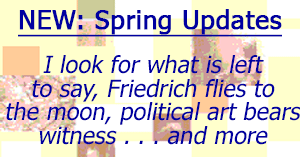6.23.25 — The Beginning of Life
To pick up from last time on the Met’s Rockefeller wing of non-Western art, “the paddle is the beginning of life.” When you live in a land of a thousand islands, it can only be so. The paddle brings life, as a tool of survival in desperate ocean kingdoms, and connectedness. It makes culture itself possible, as a life among others.
So the inhabitants of Oceania understood starting thousands of years ago. It also brings out common cultures that give a precarious unity to the Rockefeller wing of the Met.
Nothing can truly unify the renovated wing’s vast territory—nothing like calligraphic art in Asia, patterning in the Islamic wing, or a coherent history of republicanism, racism, and struggle for the American wing with its imagery of slavery, transatlantic revolution, and indigenous people. It can, though, claim a distinct, shared conception of people and art. Expect neither art for art’s sake, as a regal, formal, decorative affair, nor storytelling, with images of exalted rulers and myth. Expect instead testimony to craft and the native materials to support it. Expect, too, no distinction at all between a paddle or anything else as a literal means of passage and a metaphor.
Even more, expect human purpose and connection through family. Local peoples claim ancestors as a source of authority, descendants as an enduring legacy. The artists set as their goal to overwhelm their allies and their enemies. They ask to waken spirits. It is a story always in the making, of power and justice. It may take protection from ceremonial shields, but not at the expense of magic.
The wing’s dozens of nations are distinct all the same. I came to it from where longstanding habit would suggest, the main hall and Western art. That brought me to memories of Oceania, and it is exhilarating. There one first encounters standing figures—tall, wiry, authoritative, and fun. The curators describe them as between earth and sky, art and life. They represent Asmat, the people, us.
 They stand near canoes of impressive length, populated by small paired figures clinging to one another in combat or in play. Naturally they are carved wood, but other media of Oceanic art include whale teeth, fiber, painted bark, and horn. As raw materials go, these are raw indeed. Ceremonial shells are more precious and hardly altered, and musical instruments attest to rituals unseen. Note, though, that the canoes have room for only ancestors and demons. You can only imagine the canoes that others rode.
They stand near canoes of impressive length, populated by small paired figures clinging to one another in combat or in play. Naturally they are carved wood, but other media of Oceanic art include whale teeth, fiber, painted bark, and horn. As raw materials go, these are raw indeed. Ceremonial shells are more precious and hardly altered, and musical instruments attest to rituals unseen. Note, though, that the canoes have room for only ancestors and demons. You can only imagine the canoes that others rode.
Most lived among the many islands or in Papua, New Guinea, but not all. For a contemporary viewer, they cannot help raising the question of just who are the people, the us. The carved figures look delightful enough, but could they be the real threat? The Met identifies monstrous hudoq, creatures with sharp teeth to defeat malevolent spirits. Can you find your way in the Rockefeller wing between enemies in life and war? All you can know for certain is the search for reciprocity and balance—and I continue next time with the art of the ancient Americas and Africa.
Read more, now in a feature-length article on this site.